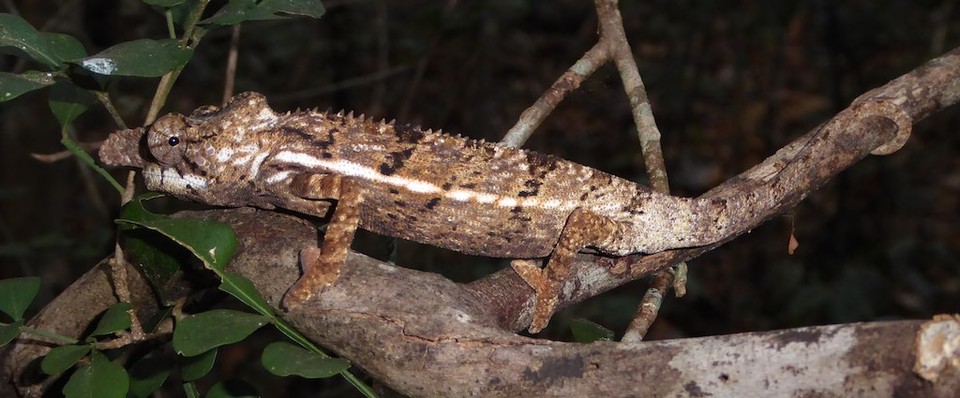
It has been previously shown that artificial UVB exposure of panther chameleons ( Furcifer pardalis) enhanced hatching success, vitamin D status of adult females, and epidermal vitamin D production ( 11– 13). If chameleons depend on endogenous vitamin D synthesis, exposure to UVB light could be a limiting factor, because many captive chameleons are kept in temperate climates or indoors. The question of whether reptiles depend on dietary vitamin D or are capable of UVB-mediated endogenous vitamin D synthesis is controversially discussed ( 10). Hence, methods to increase the Ca content in insects have been established, including the dusting of the insects before offering them as food or increasing their internal Ca content by feeding the insects Ca, a process known as gut-loading ( 7– 9). However, it has been recognized that a variety of commercially raised insects, the main food source of captive veiled chameleons, have low Ca concentrations and imbalanced Ca:P ratios that result in nutritional imbalances and disease in reptiles reared in captivity ( 5, 6). Specific mineral and vitamin requirements have rarely been investigated for most reptiles. Individuals in life stages experiencing intensive growth and enhanced demands on Ca and P metabolism, such as juveniles and reproducing females, are most affected. The disease is characterized by functional and morphological bone changes that result from dietary calcium (Ca) and phosphorus (P) imbalance, a deficiency of Ca and vitamin D in the diet, or a lack of UVB light exposure followed by the effects of secondary hyperparathyroidism. Nutritional metabolic bone disease (NMBD) 9 is one of the most frequently observed pathological conditions ( 4). However, captive chameleons require specific care and they should not be considered domesticated animals.ĭiseases in captive chameleons are most often caused by inadequate husbandry and chronic stress ( 2, 3). As a consequence, this progress in breeding may reduce the capture of wild chameleons. Whereas the global trade of chameleons is still dominated by animals caught in the wild, increasing knowledge of chameleon husbandry has resulted in successful captive breeding of several chameleon species, including veiled chameleons ( Chamaeleo calyptratus), in recent years ( 1). From these findings, recommendations for the rearing of juvenile chameleons were derived. We noticed an interaction of vitamin A and cholecalciferol supplementation in the storage of vitamin A in the liver and formation of colon calcifications. Chameleons that were fed diets low in vitamin A, cholecalciferol, and Ca were diagnosed with fibrous osteodystrophy.
#Rhinoceros chameleon plus
The best prevention for NMBD was achieved by chameleons that received locusts gut-loaded with 12% Ca and dusted with 250,000 IU/kg (75 mg/kg) vitamin A and 25,000 IU/kg (0.625 mg/kg) cholecalciferol plus provision of long (10 h/d), low irradiation exposure (3–120 μW/cm 2) to UVB. When Ca and vitamin A were supplemented, the chameleons did not develop NMBD, independently of additional UVB and dietary cholecalciferol. Chameleons that received no dietary supplementation of Ca, vitamin A, and cholecalciferol developed NMBD.

The diagnosis included the detailed description of clinical findings, histopathology, measurements of serum Ca, 25-hydroxycholecalciferol (25-OHD 3), liver 25-OHD 3, vitamin A, bone mineral density, and bone mineral concentration. The nutrient composition of the locusts' diet and the locust-based diet for the chameleons was determined. To develop guidelines for NMBD prevention in growing veiled chameleons ( Chamaeleo calyptratus), 56 hatchlings were divided into 6 groups and reared for 6 mo on locust-based diets. I have troubles remembering which order I put the parameters in sometimes which will often break the Revit curtain panel after a lengthy update.Nutritional metabolic bone disease (NMBD) is one of the most frequently observed pathological conditions in herpetoculture.
#Rhinoceros chameleon update
Is there anyway that you can pass just the GUID and a centerpoint/conerpoint from Revit to reduce the geometry grasshopper has to deal with?Īlso, I'm currently passing 6-8 parameters back to Revit each time I update the panels. I've worked around this by swapping the panels to a glazed unit (a simple box) when I pass them to GH and then reverting to my custom curtain panel when I pass the data back from grasshopper. When I try to pass 900 panels to grasshopper along with all of their geometry the process gets painstakingly slow. I built a fairly complex unitized curtain panel that I've been driving with grasshopper. I've mostly been using Chameleon to update curtain wall panels in Revit. I've come across a few requests for the plug in.


 0 kommentar(er)
0 kommentar(er)
